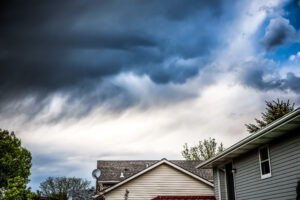 CoreLogic has released its 2023 Severe Convective Storm Risk Report, which analyzes the risk of severe convective storms nationwide associated with thunder, lightning, heavy rain, hail, strong winds, and sudden temperature changes which can occur all year round, but are most commonly found during the summer.
CoreLogic has released its 2023 Severe Convective Storm Risk Report, which analyzes the risk of severe convective storms nationwide associated with thunder, lightning, heavy rain, hail, strong winds, and sudden temperature changes which can occur all year round, but are most commonly found during the summer.
As evidenced by the March 31 severe storms responsible for more than 500 reports of tornadoes and hail from Texas to Ohio, data shows severe convective storm season peaks from March through June. These events are among the most frequent and damaging natural hazards in the country, causing the biggest weather-related property damage nationwide.
“The atmospheric changes that bring on severe storms produce events that are geographically large with irregular shapes,” said Tom Larsen, Senior Director of Insurance Solutions at CoreLogic. “Accurate risk assessment to inform preparation is critical for insurance companies and communities alike as severe weather events increase in severity and frequency with climate change.”
CoreLogic’s risk models estimate severe convective storms account for an average annual loss of more than $17 billion among the insured, with hail damage accounting for more than $11 billion of those losses. In 2022, 11 severe convective storm events caused losses that equaled more than $1 billion.
For its analysis, CoreLogic utilized its real-time Weather Verification technology and monitoring, examining the top five states that sustained the greatest amount of damage within the U.S. in 2022:
- Extreme winds in excess of 80 mph associated with severe convective storm activity impacted more than half a million homes in 2022, with Texas, South Carolina, California, South Dakota and Indiana among the top five to suffer damages.
- In 2022, more than one million homes nationwide were damaged by hailstorms, with Texas, Minnesota, Arkansas, Nebraska, and Iowa reported as the hardest-hit states.
- Nearly 8,000 homes across the U.S. were hit by tornado damage in 2022, with approximately 233 homes immediately impacted by the wind spiral of the tornado, with the remaining homes damaged from peripheral effects, primarily flying debris. Texas, Ohio, Florida, Iowa, and Mississippi were the five states that sustained the most damage.
CoreLogic risk scores are developed from a long-term history of granular Weather Verification risk quantification combined with meteorological conforming smoothing to account for regions with insufficient observation history. To estimate the value of property exposure to single-family residences, CoreLogic uses its RCV methodology, which estimates the cost to rebuild in the event of a total loss, and is not to be confused with property market value or new construction cost estimation. Reconstruction cost estimates more accurately reflect the actual cost of damage or destruction repair of residential buildings that would occur from the incidence of destructive hail, extreme winds, or the wind-borne debris in severe convective storm events because they include the cost of materials, equipment and labor needed to rebuild. These estimates also factor in geographical differences in pricing of labor and materials (actual land values are not included in the estimate). The values in the report based on 100% destruction of the residential structure. Depending on the level of damage the repair costs may not produce a repair cost of 100% to the residence.
Click here for more information on CoreLogic's 2023 Severe Convective Storm Risk Report.

 DSNews The homepage of the servicing industry
DSNews The homepage of the servicing industry









